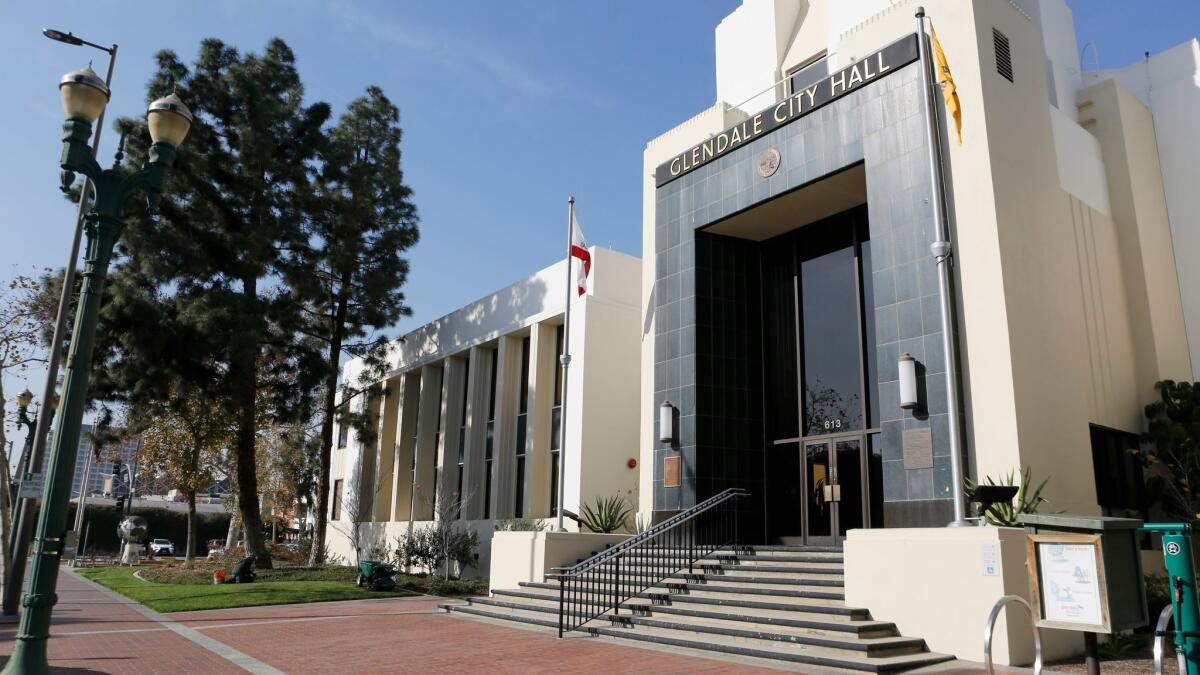Glendale adopts amendments to its conservative granny-flat ordinance

Following interim guidelines on construction of secondary dwelling units, known as granny flats that adhered to stricter standards mandated by the state, the Glendale City Council Tuesday adopted a slightly amended, yet still conservative, ordinance regulating their construction.
The Glendale City Council last year responded to a 2016 state law, which requires the construction of granny flats to deal with an affordable housing shortage, with an urgency ordinance that set the maximum size at 500 square feet compared to the state’s 1,200-square-foot limit.
For the record:
2:50 p.m. Feb. 5, 2018A previous version of this story said an amended section of the adopted granny flat ordinance would no longer allow the conversion of garages in horse overlay zones.
The 4-1 vote adopted an ordinance that mirrors the previous one but with amendments to three sections: the maximum size of a granny flat is set at 600 square feet, a tenant leasing the property is prohibited from subleasing either the flat or main residential dwelling and a portion relating to horse overlay zones is removed to allow the conversion of garages in those zones.
The amended ordinance retains most of the previous guidelines, which include that if the owner isn’t present, the property must be rented as a whole, with both structures leased together not separate, they cannot be seen from the street in historic neighborhoods, they must sit on a 5-foot setback from the property line and granny flats built above a garage are prohibited in historic districts.
Also, granny flats cannot be built in frontyards, alter the property’s facade and must be architecturally compatible with the neighborhood.
Before the vote, almost 30 speakers — many representing homeowners associations, neighborhood councils or Realtor groups — addressed the proposed ordinance during the public-comment portion of the meeting, with most asking that council members maintain the more restrictive regulations.
Lorna Vartanian, president of the Rossmoyne Mountain Homeowners Assn., encouraged the City Council to adopt provisions similar to what the cities of Burbank and Pasadena recently put in place, which only allow one dwelling on a property be rented if the owner is not living on the property, as well as maintain the 500-square-foot limit.
“We’ve heard the argument that a property owner could invite as many people as they want to live in their home, but the goal is to minimize the number of unsupervised people that could live on a property in the absence of an owner-occupant,” Vartanian said.
At the suggestion of Councilman Vrej Agajanian, who argued that a total footprint of 500 square feet was not enough living space when accounting for structural impediments, each council member agreed to increase the maximum size to 600 square feet.
According to an estimate by Kristen Sapp, a senior planner with the city, a 500-square-foot space, based on a 25-by-20 footprint, loses about 90 square feet of living space when factoring in walls.
At 600 square feet, based on a roughly 30-by-20 footprint, 100 square feet is “lost in the walls,” but provides about 500 square feet of living space, Sapp said.
Glendale municipal code requires that construction of one-bedroom apartment units must be at least 600 square feet, as a comparison.
Councilwoman Paula Devine agreed with the increase in allowable square feet but cast the only dissenting vote because she wanted a requirement that the owner be present on the property when leasing either dwelling unit.
“I would have compromised on the 600 square feet, I think that’s fair, but the other one I cannot,” she said.
Twitter: @JeffLanda
